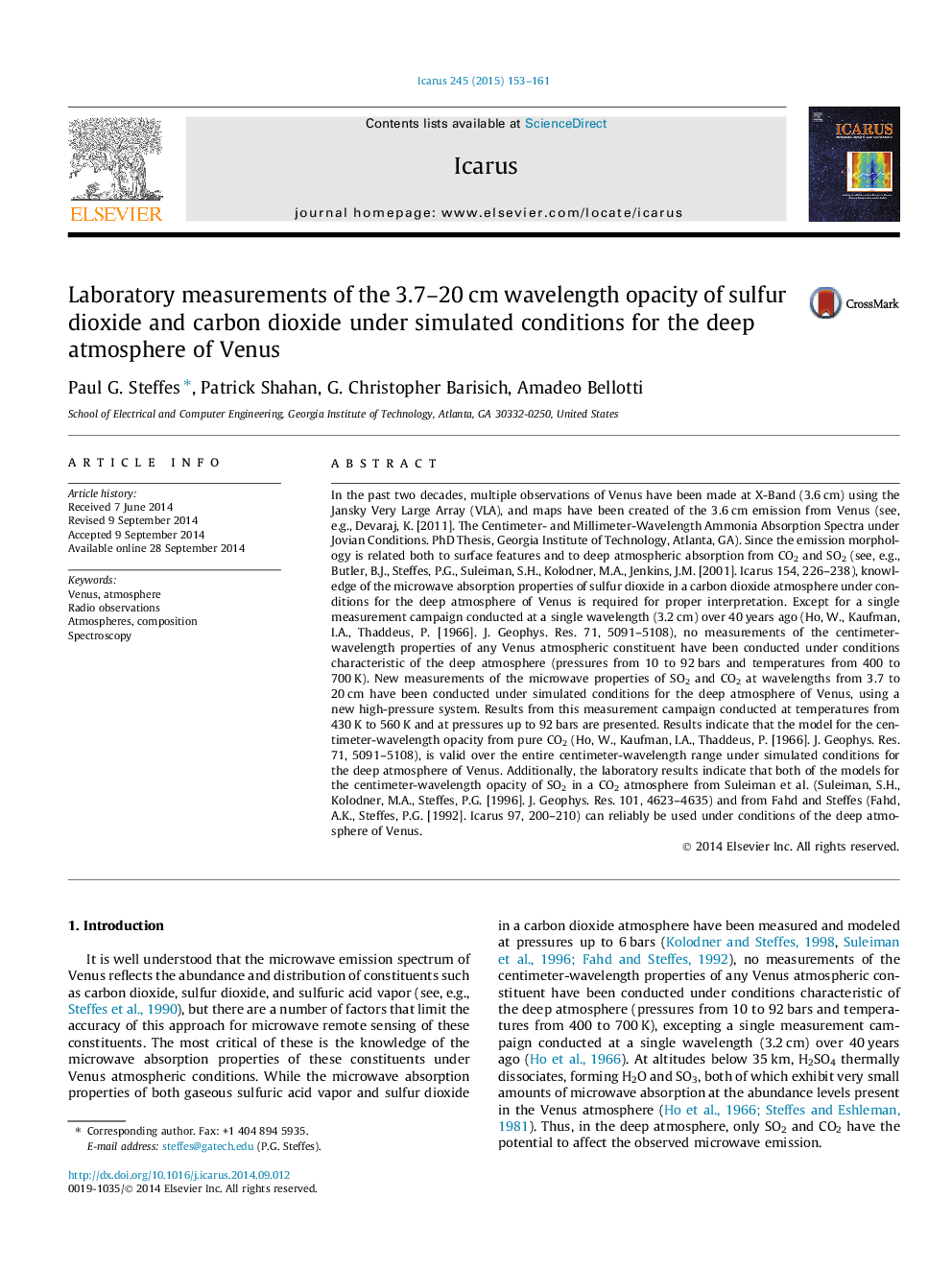| Article ID | Journal | Published Year | Pages | File Type |
|---|---|---|---|---|
| 8137429 | Icarus | 2015 | 9 Pages |
Abstract
In the past two decades, multiple observations of Venus have been made at X-Band (3.6Â cm) using the Jansky Very Large Array (VLA), and maps have been created of the 3.6Â cm emission from Venus (see, e.g., Devaraj, K. [2011]. The Centimeter- and Millimeter-Wavelength Ammonia Absorption Spectra under Jovian Conditions. PhD Thesis, Georgia Institute of Technology, Atlanta, GA). Since the emission morphology is related both to surface features and to deep atmospheric absorption from CO2 and SO2 (see, e.g., Butler, B.J., Steffes, P.G., Suleiman, S.H., Kolodner, M.A., Jenkins, J.M. [2001]. Icarus 154, 226-238), knowledge of the microwave absorption properties of sulfur dioxide in a carbon dioxide atmosphere under conditions for the deep atmosphere of Venus is required for proper interpretation. Except for a single measurement campaign conducted at a single wavelength (3.2Â cm) over 40Â years ago (Ho, W., Kaufman, I.A., Thaddeus, P. [1966]. J. Geophys. Res. 71, 5091-5108), no measurements of the centimeter-wavelength properties of any Venus atmospheric constituent have been conducted under conditions characteristic of the deep atmosphere (pressures from 10 to 92Â bars and temperatures from 400 to 700Â K). New measurements of the microwave properties of SO2 and CO2 at wavelengths from 3.7 to 20Â cm have been conducted under simulated conditions for the deep atmosphere of Venus, using a new high-pressure system. Results from this measurement campaign conducted at temperatures from 430Â K to 560Â K and at pressures up to 92Â bars are presented. Results indicate that the model for the centimeter-wavelength opacity from pure CO2 (Ho, W., Kaufman, I.A., Thaddeus, P. [1966]. J. Geophys. Res. 71, 5091-5108), is valid over the entire centimeter-wavelength range under simulated conditions for the deep atmosphere of Venus. Additionally, the laboratory results indicate that both of the models for the centimeter-wavelength opacity of SO2 in a CO2 atmosphere from Suleiman et al. (Suleiman, S.H., Kolodner, M.A., Steffes, P.G. [1996]. J. Geophys. Res. 101, 4623-4635) and from Fahd and Steffes (Fahd, A.K., Steffes, P.G. [1992]. Icarus 97, 200-210) can reliably be used under conditions of the deep atmosphere of Venus.
Related Topics
Physical Sciences and Engineering
Earth and Planetary Sciences
Space and Planetary Science
Authors
Paul G. Steffes, Patrick Shahan, G. Christopher Barisich, Amadeo Bellotti,
